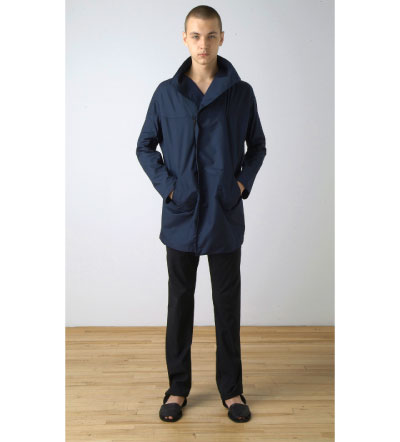

Maria Cornejo, a Chilean-born designer, has long been an underground fixture in the fashion world. Not exactly famous, not exactly unknown, she has consistently put out beautiful womenswear since her club kid days in London three decades ago. After growing tired of London Cornejo moved to Paris and then Tokyo, finally settling in New York City in 1996, where she opened an atelier in Nolita under the name Zero. She has become known for her unconventional, fluid garments that may look perplexing on the hangers but morph and fall gracefully once on the body.
This season Cornejo decided to dip her toes into the overheating men’s fashion market by creating a capsule menswear collection, which she showed with her womenswear during the Spring 2010 New York fashion week. With admirable consistency she transferred her design signature into a concave-shaped rain jacket, a seamless one-piece shirt, an oversized sweater with dropped shoulder, and slim bias-cut pants, among other pieces. The resulting silhouette is perfectly laid-back – no easy task to achieve when everyone these days seems to be trying their hardest to look nonchalant. The fabrics echo the comfort of the slightly asymmetric cuts – soft cottons and spring weight wool are predominant. The muted and discreet colors – black, white, and navy – create a gentle quietness around the collection.
(more…)
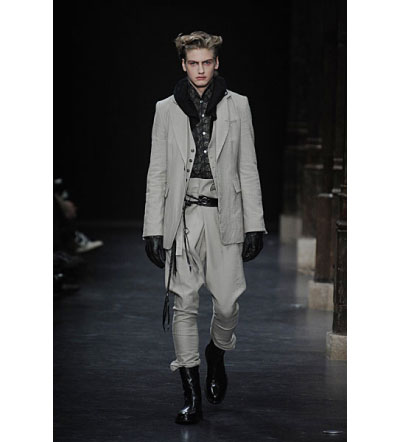

Ann Demeulemeester
Queen Ann is the last romantic left in fashion. In the 21st Century, she is the one designer who can speak of poetry in her work unselfconsciously. Perhaps this collection was Demeulemeester sensing that our world is becoming increasingly prosaic. Backstage after the show, Demeulemeester said, “I started this collection by imagining a duke. Left in his castle, cut off from the world, what would he wear?” The answer — long black coats, high-waist riding pants, and leather rope belts. The tall young men Demeulemeester sent down the runway were every bit uninvolved, lost in their own thoughts, lost in their own clothes, lost in their own world. These days, Demeulemeester likes to puncture her usual black and white palette with a choice of color. For this show her color of choice was olive-gray, which translated well into the capes and asymmetric, voluminous jackets.
(more…)

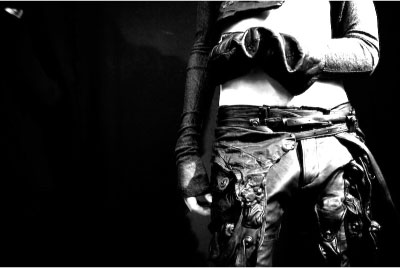


Black is the most misunderstood color. In fashion, black has been co-opted by two groups of people: the Balmain-sporting fashionistas who think that chic is a value in itself, and the misguided (by Hot Topic) teenagers who worship Satan and Marilyn Manson in the safety of their suburban homes. But black is not the color of chic or nihilism. For Tatsuro Horikawa, the young Japanese designer behind the cult clothing label Julius, black is the color of depth. It is not there to promote aggression and destruction – the pop version of black – but to display his awareness of the world that is subject to aggressive and destructive forces. And, as unexpected as it might sound, it is also a color of hope. “Black is the color of complete and utter grief,” says Horikawa’s manifesto, “and redemption through atonement.” This view is a kind of existentialism – the idea that we alone are responsible for our fate and carry the full burden of responsibility for our actions, and thus must bear witness to the world’s evil. This view can be easily traced in Horikawa’s uncompromising designs – the oiled leather jackets, heavy jeans with multiple pockets, and drapey, shredded tops. Their purposeful ruin is the reflection of our imperfection. But these clothes are also indestructible, like the human spirit.
Horikawa started out as a graphic designer in the late ’90s, forming a Tokyo-based art collective that produced multimedia installations. He considers the clothes to be the project’s extension.
(more…)

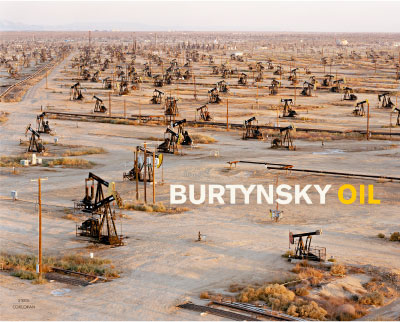
Steidl Books


The world is divided into three types of people: those who are conscious about the environmental damage we inflict on our planet, those who do not care, and those who are inclined to care but need some prodding. Sometimes it takes an artist to put things into perspective, to provide the visceral impact that can shock us into awareness. Edward Burtynsky’s new book, Oil (Steidl, $128), is just the ticket.
Burtynsky has long been fascinated with what he calls “human-altered landscapes,” the vast vestiges of industrial activity. After a while he realized that oil production is the force behind many of these landscapes. Burtynsky began photographing human-made sites that have direct and remote relationships with oil. These include oil fields, refineries, car lots and scrape yards, and highways. The ten-year project resulted in a book containing a hundred panoramic shots from all over the world.
This panoramic view is certainly an eye-opener. Let’s just say that whenever we take an exit from one highway to another, we don’t really think about the intricate anthill infrastructure of the roads. And, of course, some of us would rather not think about the mechanical ugliness of an oil refinery, the unfamiliar, repelling apparatus that we rely on for the modern world to function.
(more…)
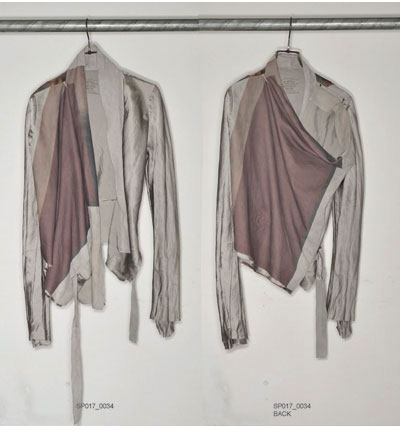

Ever wanted to own something truly unique? Now you can. No Editions, a new label designed by Christian Niessen and Nicole Lachelle, takes inimitability to a new level. The idea behind their designs is deceptively simple: take high quality garments with basic shapes and put prints on them. No two prints are alike, so you get a one-of-a-kind finished garment with a numbered label. No duplicate will ever be produced, not even in a different size or shape.
Niessen and Lachelle met in the early 90s while working for the iconic Austrian designer Helmut Lang in Vienna. Several years after Lang was bought by Prada, they decided to strike out on their own, doing technical research for various clothing companies. After that Niessen and Lachelle started producing video installations. The idea for No Editions came out of their desire to translate the transience of the moving image into something less ephemeral. They also did not want to play the fashion game – no catwalk shows, no seasonal collections, and no advertising. “I never bought into the idea of ‘a lifestyle,’” says Niessen. “I don’t care about projecting an image. I want the wearer to make the garment her own.”
All prints are produced through extensive manipulation of videos. Niessen is fascinated with the amount of information on the Internet and its malleability. For the next round of prints he used websites where one could access public cameras for a short period of time and record raw video footage.
(more…)
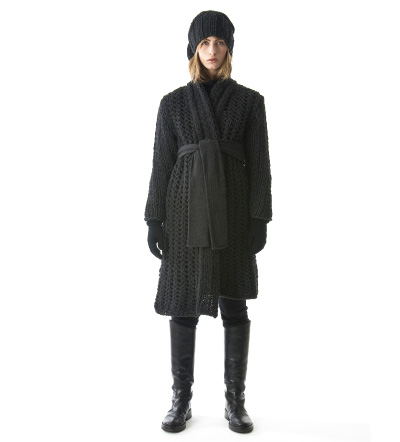


Some time ago, Ann Chapelle, owner and CEO of BV32, a company that runs Belgian fashion houses Ann Demeulemeester and Haider Ackermann, was pondering the state of the fashion industry. She hardly liked what she saw – a world dominated by marketing and designers diluting their brands by sticking their name on anything from house paint to helicopters. In this world, branding trumped quality, and young designers could hardly develop their own voice.
To change the status quo Chapelle created a new project, called “…a moment in…” At its core is a platform for creating and distributing clothes and accessories – “… a moment in…” is neither a fashion house subjected to the whims of a star designer, nor is it another uninspired luxury goods manufacturer. Its goal is to introduce different lines of products in limited quantities, concentrating on design and quality. Each line, introduced at six-month intervals and then continuously run, will address different market segments. Each will be created by a young designer, and allow the expression his or her vision. “One of the reasons I wanted to create this project is that there are so many young talented designers who struggle to get on their feet,” Chapelle says. ”This project allows them to apply their skills.” At the same time, each designer will have the support of a team of nine professionals familiar with different aspects of the business, handpicked by Chapelle herself. The first line, women’s knitwear, was launched in March 2009. The heavy wool and cashmere knit pieces are cozy, understated, and luxurious.
(more…)
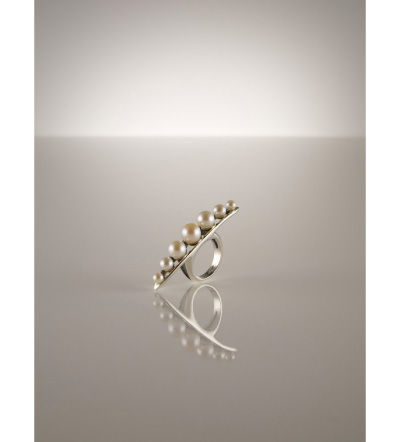

Sex is a luxury. Or so Coco de Mer, the purveyor of fine erotic objects, insists. As our society keeps loosening up about sex, erotic play becomes acceptable. No longer associated with perversion and thus banished into the sleaziness of the red light districts, sexual play is now a pastime. Like many leisurely activities, it allows room for luxury and good taste. After all, what girl wants to be satisfied with a cheap plastic vibrator bought in a seedy porn store? This is the line of thinking Sam and Justine Roddick, the co-founders of Coco de Mer, took. “One of the thoughts that came out of my involvement in a feminist rights movement,” Sam Roddick says, “was the idea that women deserve a space where they can feel comfortable and not ashamed of their sexuality. That is the type of store I wanted to create.”
The first Coco de Mer New York store, opening today in Nolita, certainly reflects this manifesto. It is an inviting space with an intimate atmosphere, a boudoir and not a brothel, reflecting the implicit understanding that kinkiness arises out of feeling of comfort and that true pleasure only comes from the willingness to please. And there is no shortage of kinky, but sweet, touches, from the purple silk blindfold that reads, “Freedom is deciding whose slave you want to be,” to the improbably sexy lingerie.
(more…)
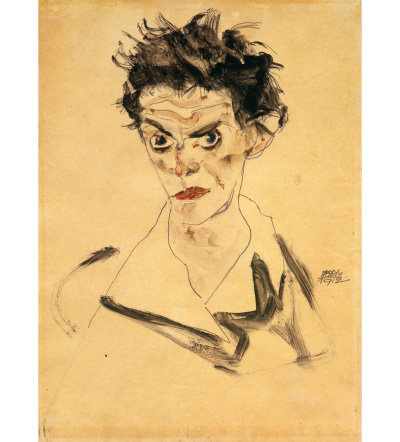
Images courtesy of Galerie St. Etienne, New York

Egon Schiele, an Austrian figurative painter, was a highly controversial figure. During his brief life and career at the beginning of the 20th Century he was praised for his portraits and denounced for his lascivious lifestyle. He thought highly of himself, but also suffered from persecution mania. Mixing self-aggrandizement and self-hatred, he poured his heightened sense of anxiety into his art. Much of it was made up of self-portraits, often nude and without a penis, reflecting his narcissism and dejection. Much of his other work consisted of female nudes.
Schiele was recognized as a promising artist during his lifetime. A less known fact about Schiele is that he was an expert printmaker. In order to bring this aspect of his work to light, Galerie St. Etienne in New York has put together an exhibition of nearly fifty of Schiele’s prints, woodcuts, and etchings. Most of the work engages his already familiar themes. Schiele’s portraits, with their sad faces and contorted bodies reflect the torture of human condition, of the desire to be completely free to follow one’s instincts and the inability to do so because of social taboos. The female nudes are always overtly sexual, the stark red of their nipples emphasized against the dull colors of their twisted figures. His self-portraits reflect deeply rooted angst, half-hidden by a mask of cockiness. Angst is also the subject of Sorrow, the most powerful image of the exhibition. The listless female figure sitting on top of a rock could be a fitting illustration for Albert Camus’ seminal existentialist essay “The Myth of Sisyphus”.
Egon Schiele As Printmaker is on view at Galerie St. Etienne until January 23, 2010.
(more…)
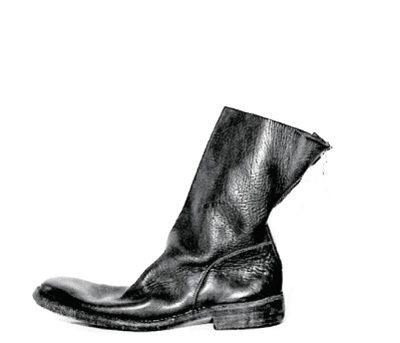
Images courtesy of Guidi


It’s no secret that the landscape of fashion manufacturing is changing. More and more high-end designers are outsourcing production to China and other third world countries in order to increase profit margins. Guidi, one of the most prestigious leather tanneries, is also one of the few left in Europe. Located in a small Tuscan town of Pescia, where leather tanning is a tradition that goes back to the 14th Century, Guidi has been producing fine leather since 1896. Today, it supplies leather to many top fashion houses. Several years ago, Guidi’s owner decided to start producing leather goods under its own name. This meant traditional artisanal production in limited runs, using its own leather, ranging from supple cowhide to hard cordovan. The footwear and bags are hand-finished and their styles rarely change, bucking the traditional notion that fashion must be fast-paced. Instead, Guidi is focused on longevity.
Insistence on permanence is not the only reason why Guidi stands out. The hard-core aesthetic of distressed, rugged-looking footwear and bags purposefully goes against the conventional image of polished Italian style.
(more…)

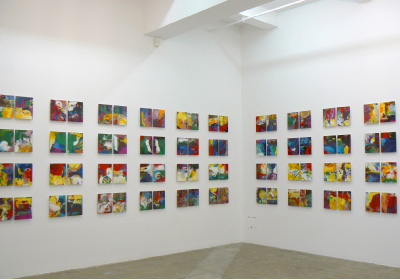
Images courtesy of Marian Goodman Gallery


Clement Greenberg, the infamous art critic who made and unmade Jackson Pollock, once wrote in his essay on the avant-garde that the goal of abstract painting is to imitate the process of art itself and not any discernable reality. Thus, painting becomes about paint, color, texture and line. If such criteria are valid, then Gerhard Richter’s new exhibition at Marian Goodman gallery, first in New York since 2005, is a definite success.
The show displays a comprehensive collection of Richter’s work from this decade. In the first room his biggest paintings provide a study in tone gradation. Through the glossy paint one can see the emotional intensity of the horizontal brush strokes, which makes the viewer feel the act of painting. The next room contains a new series of works titled Sindbad, painted in 2008. These are 30 cm x 50 cm paintings done in lacquer behind glass. Here, the prime colors collide in an almost phantasmagoric way, cutting and crashing into each other. The Grey series is a monochromatic study of texture; the oil paint is dabbed on the canvas, achieving a three-dimensional effect that is reminiscent of cracked desert surface. A standalone painting titled September is one of those rare abstract works whose visceral impact, achieved solely through its color and texture, so accurately reflects its name. Its colors convey the dreary mood of autumn, and its effect becomes even more solemn if you think of the events of 9/11.
(more…)





 Facebook
Facebook Permalink
Permalink Digg
Digg Reddit
Reddit LinkedIn
LinkedIn StumbleUpon
StumbleUpon Tumblr
Tumblr















